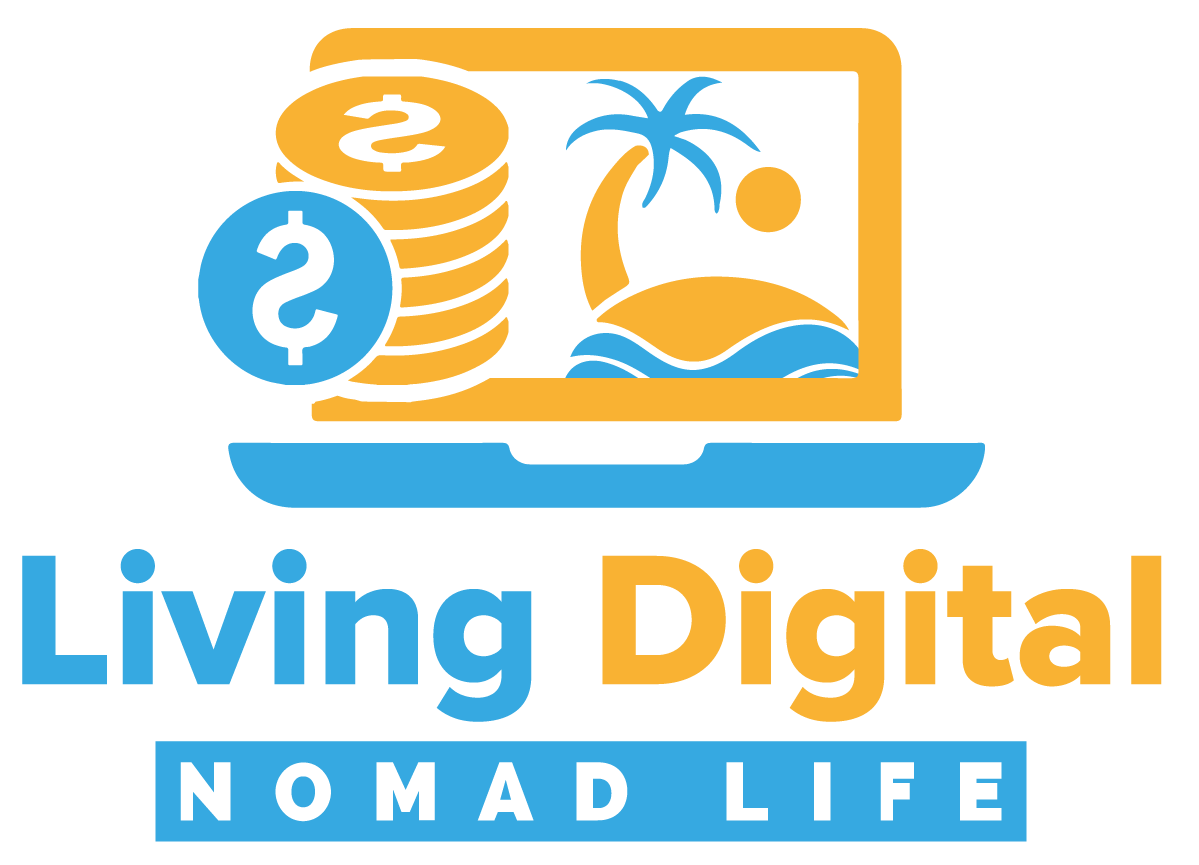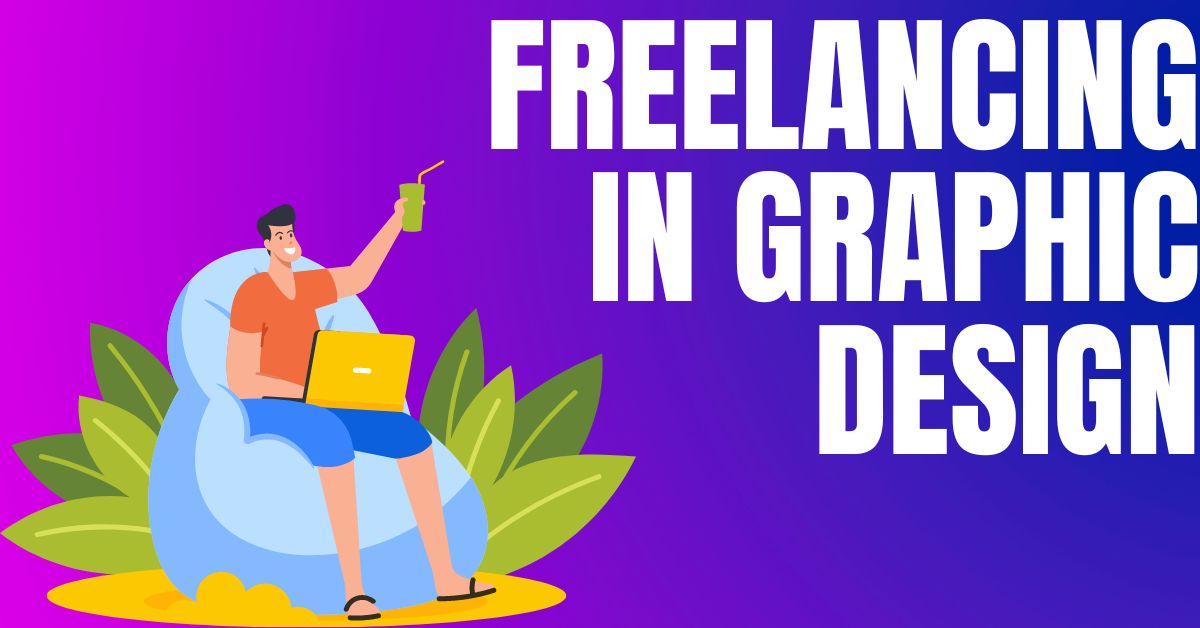If you’ve been drawn to the prospect of working independently and have a knack for visual creativity, freelancing in graphic design could be a promising path for you. With a rise in demand for visual content across digital platforms, graphic design as a freelance career is thriving and becoming pivotal in how businesses communicate with their audiences.
Graphic design in a freelance capacity involves creating visual content to communicate messages. By applying visual hierarchy and page layout techniques, designers use typography and pictures to meet users’ specific needs and focus on the logic of displaying elements in interactive designs to optimize the user experience.
Like any worthwhile endeavour, freelancing comes with its own set of advantages and challenges. Some perks include the flexibility to set your hours, choose the projects that interest you, and the potential for a varied and dynamic workload. On the flip side, you’ll face challenges like inconsistent income, the need for self-discipline, and the requirement to wear multiple hats beyond just design to succeed.
As we delve further into what it takes to be successful in this field, it will be crucial to examine the skills, tools, and professional traits that set apart thriving freelance graphic designers. Understanding these will provide a roadmap for aspiring freelancers and be a cornerstone for established designers looking to polish their craft.
Essential Skills and Tools for Successful Freelance Graphic Designers
Embarking on a freelance graphic design career demands more than just a flair for art; it requires a solid foundation in specific skills and tools that can turn a hobby into a viable profession. I must focus on developing these to deliver work that speaks to clients and positions me for success.
Technical skills are a given. I must be proficient in industry-standard software like Adobe Creative Suite, which includes Photoshop, Illustrator, and InDesign. Besides mastering these tools, knowledge of web design platforms such as WordPress or Squarespace can expand my offerings. There’s also a shift towards cloud-based design tools like Canva and Sketch, catering to client collaboration and flexibility demands.
But it’s not just about technical know-how. I also need to cultivate soft skills. Clear communication is essential for understanding client needs and presenting my ideas effectively. Time management helps me juggle multiple projects, and adaptability allows me to adjust as project demands shift.
Moreover, I have to stay ahead of the curve through continuous learning. The field of graphic design is dynamic, and trends continuously evolve. Online courses, webinars, and workshops prove valuable in keeping my skills sharp and up-to-date.
I’m about to step into the gig marketplace, a domain filled with potential and competition. Platforms like Fiverr and Upwork have become arenas where graphic designers showcase their skills and vie for attention. This next section navigates the intricacies of these marketplaces, ensuring I understand how to leverage them for my professional growth.
Navigating Gig Marketplaces: Fiverr and Upwork
As a freelance graphic designer, you’ll find gig marketplaces like Fiverr and Upwork invaluable in finding work and building your clientele. These platforms cater to freelancers of all levels, offering a variety of projects across a broad spectrum of categories.
First, choosing the platform that best aligns with your services and goals is crucial. Fiverr is often regarded as the go-to for quick, budget-friendly gigs, while Upwork tends to attract longer-term projects and clients willing to invest more in quality.
Creating an eye-catching profile is your next step. It would be best to have a standout headline, a descriptive bio, and a portfolio showcasing your best work. Remember to be clear and concise and to highlight your unique value proposition.
Securing gigs requires persistence and attention to detail. Writing personalized proposals that address each client’s specific needs can make a tremendous difference. A clear understanding of the project scope and how to solve the client’s problem is key to winning work.
Once you start getting jobs, client communication becomes the cornerstone of success. Be proactive in setting expectations and maintain openness to feedback. Always strive for excellence to encourage repeat business and client referrals—this is how you’ll build a sustainable freelance career.
Use these platforms not just as a bidding space but as a way to learn what businesses need. This will help you refine your services and stay competitive. In the following section, we’ll discuss how to price these services competitively, ensuring you’re compensated fairly for your talent and hard work.
Pricing Your Graphic Design Services Competitively
If you’re venturing into freelancing in graphic design, setting competitive prices for your services is fundamental to your success. It’s where the balance between valuing your expertise and understanding what the market will bear becomes critical. Knowing how to price your services is a skill that can affect your income and reputation.
First off, research is vital. You need to know the going rates in the graphic design industry. This might vary widely depending on your experience, the complexity of the project, and even geographical location. Websites like The Creative Group and AIGA design surveys are good places to start for industry-standard rates.
I suggest you develop a transparent pricing structure. Consider whether you want to charge by the hour, by the project, or have a retainer model for ongoing work. Hourly rates are transparent and straightforward, while project-based pricing can be tailored to the value you’re providing, factoring in the uniqueness and scope of the work.
It’s essential to be transparent with your clients about your pricing model. Clear communication can prevent misunderstandings and build trust. Currency consistency is also vital if you are working with international clients and considering the impact of exchange rates.
Remember, too, that negotiations are part of business. Be prepared to explain the rationale behind your rates and stay open to discussion. Yet, always have a bottom line that reflects your worth and ensures you’re not underselling yourself.
Lastly, your pricing strategy shouldn’t be set in stone. Review and adjust your rates accordingly as you gain more experience and build your portfolio. This shows clients that your pricing evolves alongside your growing expertise.
Building a Strong Portfolio to Attract Clients
When I say a portfolio is crucial for a freelance graphic designer, I’m stressing its role as your career’s visual backbone. It’s not just a collection of previous works; it’s your professional story illustrating your style, skills, and projects you excel.
First, remember that quality trumps quantity. You don’t need to showcase everything you’ve ever created. Choose projects that demonstrate a range of skills and versatility, but also pay attention to the work that best represents your unique style and expertise. This helps potential clients quickly understand your offer and whether it aligns with their needs.
Consider the narrative your portfolio tells. Is it clear what services you provide? Does your portfolio cater to a specific market or display a broad-range competency? Make sure it’s intentional. Including detailed case studies for some of your projects can provide insight into your creative process and problem-solving abilities, further winning over clients.
In terms of presentation, think simple, accessible, and professional. An online portfolio that’s easy to navigate and visually appealing reflects your professionalism and attention to detail. Plus, with your work easily shareable, you increase the chance that your portfolio will reach more prospective clients.
Ensure that your portfolio is up-to-date. Regularly adding your latest projects keeps your work fresh and relevant. This also shows that you’re actively engaged in your craft and responsive to the latest design trends, which can be a comforting sign to clients that you’re well-versed in modern design principles.
Lastly, your portfolio should be a living document of your growth and adaptability in graphic design. It should evolve as you do, incorporating new skills, techniques, and experiences. Use it not just to look back on where you’ve been but to indicate where you’re heading and how that aligns with the future needs of potential clients.
Marketing Yourself as a Graphic Design Freelancer
You’ve polished your skills, and your portfolio displays your best work. Now, it’s about getting people to take notice. Marketing yourself is crucial for success in the freelance world, and doing it right can mean the difference between struggling for that next gig and having clients come to you.
Your personal brand is your professional fingerprint. It’s what sets you apart in a crowded marketplace. Creating a consistent and recognizable presence across all platforms helps build trust and recognition. Use your work and your unique perspective to craft a resonant narrative. Whether it’s your innovative use of colour, your knack for typography, or your approach to user experience, make sure it’s evident in everything you share.
Social media platforms and professional networking sites are your allies. Regularly sharing your work, engaging with other professionals, and contributing to discussions showcase your expertise and expand your reach. Remember, visibility is vital. Choose platforms frequented by your target clientele – Instagram for its visual focus or LinkedIn for its professional network.
And don’t underestimate the power of word-of-mouth. Satisfied clients can become your biggest advocates. Beyond delivering exceptional work, encourage clients to share their positive experiences with their networks. Collect testimonials and display them prominently. Referrals can significantly reduce the time and effort you invest in prospecting new clients.
With each of these marketing efforts, you’re not just finding work; you’re building a reputation. It’s a stepping stone to the next important phase: managing client interactions and projects, which I’ll dive into next.
Client Interaction and Project Management
If you’re a freelance graphic designer, your ability to manage clients and projects efficiently can often be just as important as your design skills. After all, this is where your professional reputation takes shape.
One of the critical aspects of managing clients is clear and timely communication. From the initial briefing to the final delivery, maintain a dialogue that ensures everyone’s on the same page. Use tools like email, video calls, or project management software to keep the lines of communication open.
When it comes to setting expectations, honesty is your best policy. Be upfront about timelines, potential challenges, and your design process. This transparency builds trust and reduces misunderstandings.
Effective time management is crucial in delivering projects on deadline. Creating a schedule and sticking to it helps meet deadlines and balance multiple projects. This means using calendars and setting reminders for critical milestones.
Feedback is an inherent part of the design process. Embrace it, and create a structured process for revisions. Whether you’re dealing with constructive criticism or subjective preferences, respond professionally. Remember: revisions are a pathway to refinement.
Documentation is essential. Always have a record of agreements, feedback, and changes. This practice is your safety net and can help resolve any disputes that may arise.
Project management can elevate the client experience, setting the stage for repeat business and referrals, which are the lifeblood of a thriving freelance career.
Staying Ahead: Trends and Future Outlook in Freelance Graphic Design
Like many creative fields, graphic design is subject to the ebb and flow of trends. As a freelancer, I must keep my finger on the pulse of the latest design movements and technologies to stay relevant. Right now, minimalism, bold typography, and immersive AR experiences are capturing clients’ attention.
But beyond the current styles, the future holds even more transformative changes. Automation and artificial intelligence are beginning to edge into realms traditionally dominated by human creativity. I adapt by mastering new tools and offering services that leverage these advancements.
Considering the future of freelancing, I see a landscape rich with opportunity but also competition. Remote work continues to gain traction, leading to a truly global marketplace. I stay competitive by continuously enhancing my skills, expanding my service offerings, and fostering meaningful client connections.
Sustainable freelancing in graphic design isn’t just about enduring; it’s about evolving. Whether it’s exploring eco-friendly design or venturing into virtual reality, I am committed to embracing innovation. I acknowledge that the only constant in freelance graphic design is change. I am ready to meet it with a versatile skill set, a dynamic portfolio, and the resilience to navigate the shifting terrain. The future looks bright, and I am prepared to shine alongside it.
Until next time, Digital Nomads!
-Kyle






